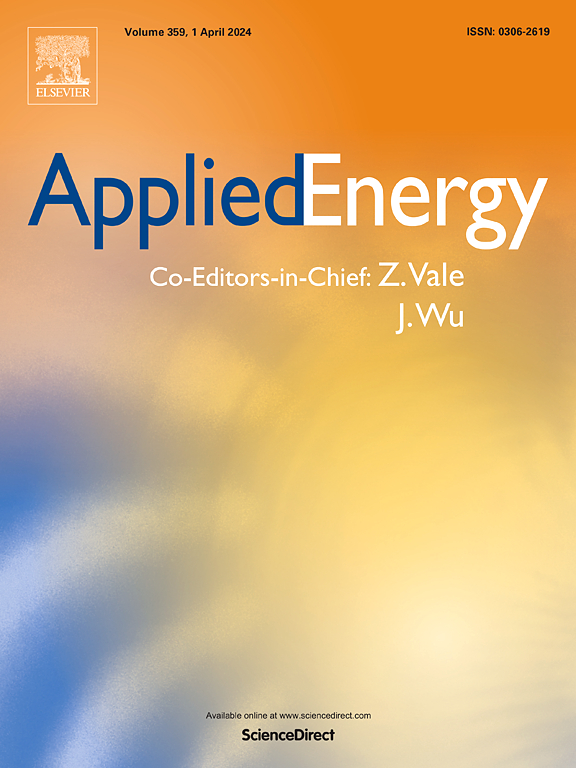Detailed system modeling of a vanadium redox flow battery operating at various geographical locations
IF 11
1区 工程技术
Q1 ENERGY & FUELS
引用次数: 0
Abstract
To avoid thermal precipitation, the electrolyte temperature of vanadium redox flow batteries should be within 5–40 °C. Consequently, an online thermal management system is essential, which impacts battery efficiency. A detailed thermal analysis was performed that considered a container, inner thermal radiation, global irradiance, and the thermal relationship between the system and the ambient at eight different weather stations with different climates around the globe. To meet the safe operation threshold criteria, a hybrid thermal management system was used to minimize heating and cooling energy consumption, consisting of control dampers, cooling fans, air conditioners, and heating and cooling electrolyte flows. The simulations were performed during the coldest and hottest 10-day periods of the year to determine the necessary insulation thickness and the energy consumption of cooling and heating; the latter was only required for one location. The presented thermal management system consumes up to 11 % of the total input power in extremely hot weather conditions. The simulation results show that efficiency increases with the decrease in ambient temperature until heating becomes necessary. The presented model helps predict the efficiency at any geographical location before battery installation and evaluates the need for various heating and cooling approaches.

在不同地理位置运行的钒氧化还原液流电池的详细系统建模
为避免热沉淀,钒氧化还原液流电池的电解液温度应控制在5 ~ 40℃。因此,在线热管理系统至关重要,因为它会影响电池的效率。进行了详细的热分析,考虑了容器、内部热辐射、全球辐照度以及系统与全球八个不同气候的气象站之间的热关系。为了满足安全运行阈值标准,采用了混合热管理系统来最大限度地减少加热和冷却能耗,该系统由控制阻尼器、冷却风扇、空调和加热和冷却电解质流组成。在一年中最冷和最热的10天进行模拟,以确定所需的隔热厚度和制冷和制热能耗;后者只需要用于一个地点。在极端炎热的天气条件下,所提出的热管理系统消耗高达总输入功率的11%。仿真结果表明,效率随着环境温度的降低而提高,直到需要加热为止。所提出的模型有助于在电池安装之前预测任何地理位置的效率,并评估各种加热和冷却方法的需求。
本文章由计算机程序翻译,如有差异,请以英文原文为准。
求助全文
约1分钟内获得全文
求助全文
来源期刊

Applied Energy
工程技术-工程:化工
CiteScore
21.20
自引率
10.70%
发文量
1830
审稿时长
41 days
期刊介绍:
Applied Energy serves as a platform for sharing innovations, research, development, and demonstrations in energy conversion, conservation, and sustainable energy systems. The journal covers topics such as optimal energy resource use, environmental pollutant mitigation, and energy process analysis. It welcomes original papers, review articles, technical notes, and letters to the editor. Authors are encouraged to submit manuscripts that bridge the gap between research, development, and implementation. The journal addresses a wide spectrum of topics, including fossil and renewable energy technologies, energy economics, and environmental impacts. Applied Energy also explores modeling and forecasting, conservation strategies, and the social and economic implications of energy policies, including climate change mitigation. It is complemented by the open-access journal Advances in Applied Energy.
 求助内容:
求助内容: 应助结果提醒方式:
应助结果提醒方式:


